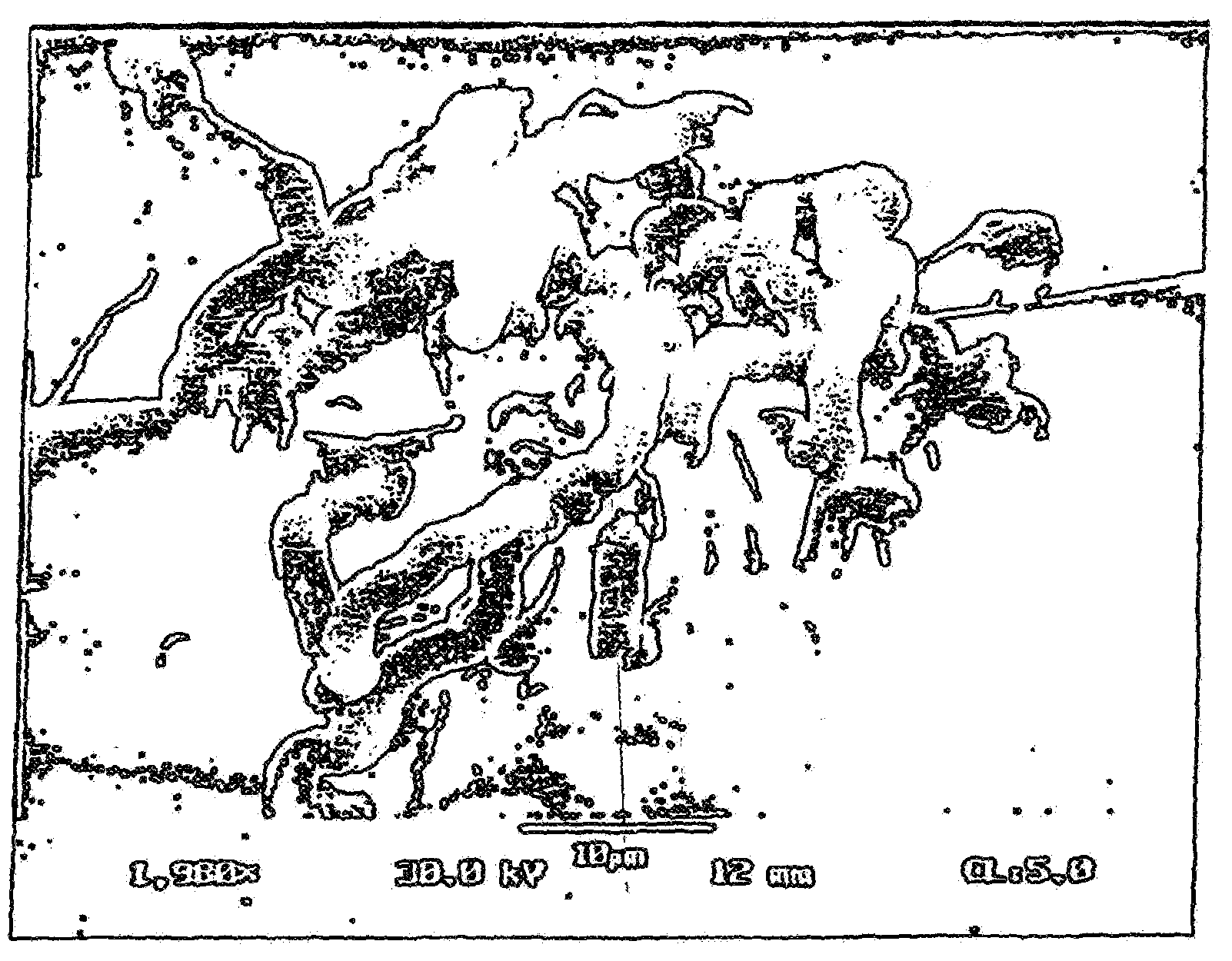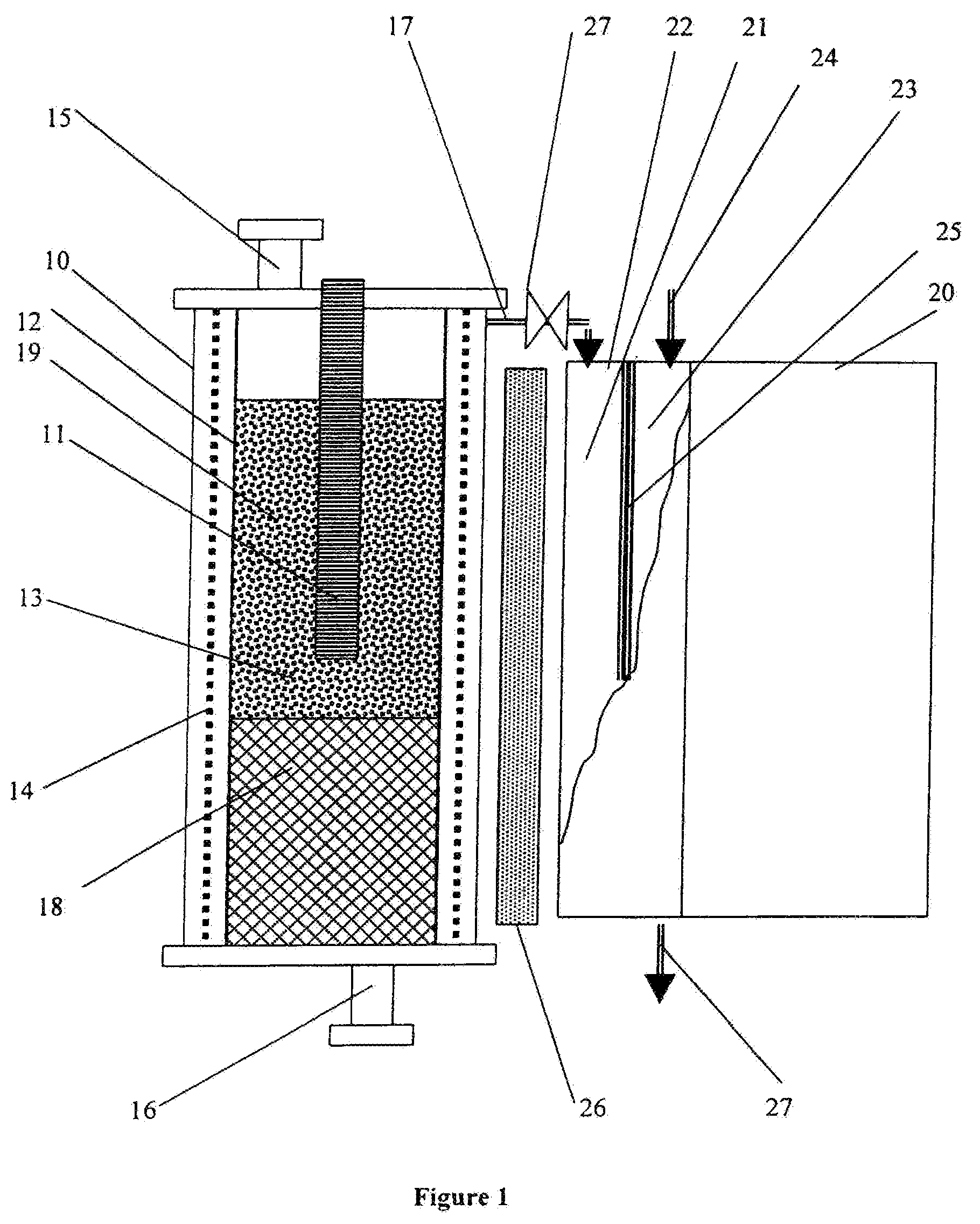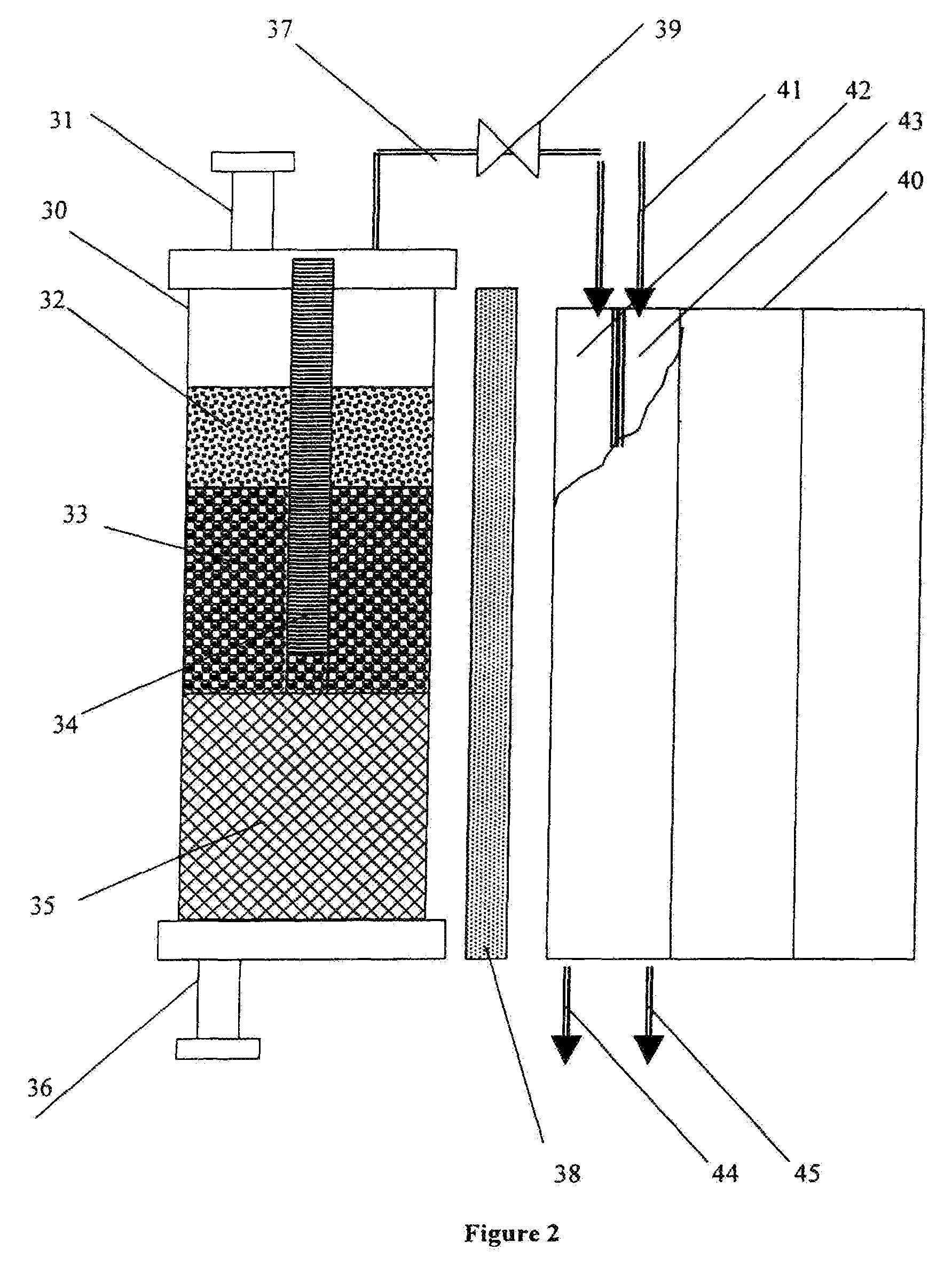Particles of spilled oil-absorbing carbon in contact with water
a technology of oil-absorbing carbon and oil-absorbing carbon, which is applied in the field of new particles of oil-absorbing carbon in contact with water, can solve the problems of low hydrogen storage capacity, low and the difficulty of storing hydrogen cryogenically adsorption on activated carbon, etc., to achieve the effect of increasing the specific energy and overall energy efficiency of the portable devi
- Summary
- Abstract
- Description
- Claims
- Application Information
AI Technical Summary
Benefits of technology
Problems solved by technology
Method used
Image
Examples
example 1
[0043]An activated carbon (CL-20 brand, produced from coconut shells by Barneby Sutcliffe Corp.) in the form of 1 mm granules with the surface area of 1650 m2 / g was used as a catalytic material. 0.5 g of AC was placed in a quartz tubular reactor (volume 5 ml) with closed end; the reactor was heated by the external electric heater to 500° C. and purged with an inert gas (Ar) using a thin (OD 1.6 mm) ceramic tubing reaching the bottom of the reactor in order to remove adsorbed water and entrained air from the catalyst. The reactor cooled to room temperature and 0.2 ml of gasoline was introduced to the bottom of the reactor using the same ceramic tubing such that it soaked into lower catalyst layer. The ceramic tubing was removed and the reactor connected to a gas meter. This was followed by heating the upper part of the catalyst layer to 850° C. and slowly moving a heater downward to the bottom of the reactor. The total of 148 ml of gas with the average production rate of 7.5 ml / min w...
example 2
[0044]The experimental conditions of this experiment and the reactor were similar to the Example 1, except a ceramic fiber (volume 0.5 ml) was place at the bottom of the reactor and 0.41 g of diesel fuel was soaked into it. The reactor was maintained at 850° C. 405 ml of gas with the average production rate of 10 ml / min was collected in the gas meter. The composition of the gaseous mixture was (vol. %): H2−69.21, CH4−30.21, C2+−0.58.
examples 3-6
[0045]The following Table demonstrates other examples of the device operation using different CM and hydrocarbons at T=850° C., P=1 atm, CM=0.5 g. Liquid hydrocarbons 0.2 g.
[0046]
TABLE 1CatalyticGaseous Products, vol. %ExampleMaterialHydrocarbonH2CH4C2H6C2H4C3+3AC, CL-20Hexane80.7410.882.464.501.434AC, KBB*Iso-octane58.6931.360.972.536.455AC, KBBPropane**74.1518.941.402.183.326Fe (10 w %) / Gasoline82.1413.600.841.841.58Al2O3*KBB is AC produced from a hardwood by NORIT Americas**Equimolar amount of propane was introduced into the reaction zone via ceramic tubing
[0047]Examples 7 and 8 demonstrate the feasibility of hydrocarbon decomposition over carbon-based CM heated by means of passing electric current through it.
PUM
| Property | Measurement | Unit |
|---|---|---|
| mean diameter | aaaaa | aaaaa |
| temperatures | aaaaa | aaaaa |
| temperature | aaaaa | aaaaa |
Abstract
Description
Claims
Application Information
 Login to View More
Login to View More - R&D
- Intellectual Property
- Life Sciences
- Materials
- Tech Scout
- Unparalleled Data Quality
- Higher Quality Content
- 60% Fewer Hallucinations
Browse by: Latest US Patents, China's latest patents, Technical Efficacy Thesaurus, Application Domain, Technology Topic, Popular Technical Reports.
© 2025 PatSnap. All rights reserved.Legal|Privacy policy|Modern Slavery Act Transparency Statement|Sitemap|About US| Contact US: help@patsnap.com



